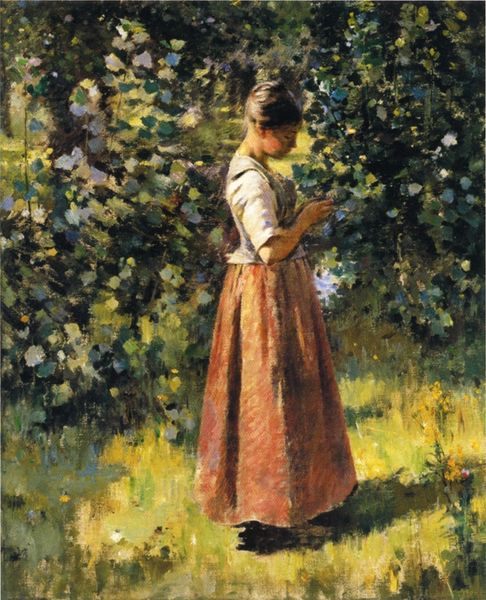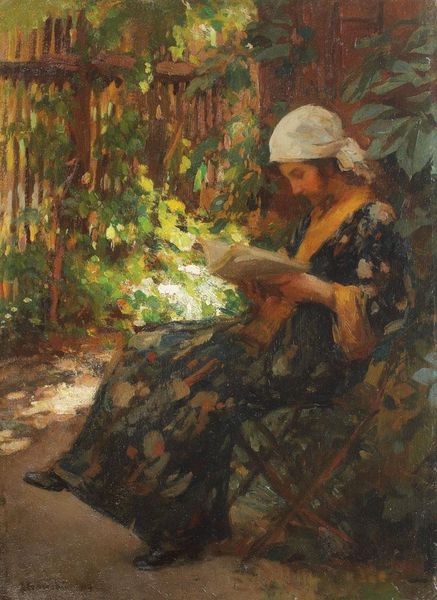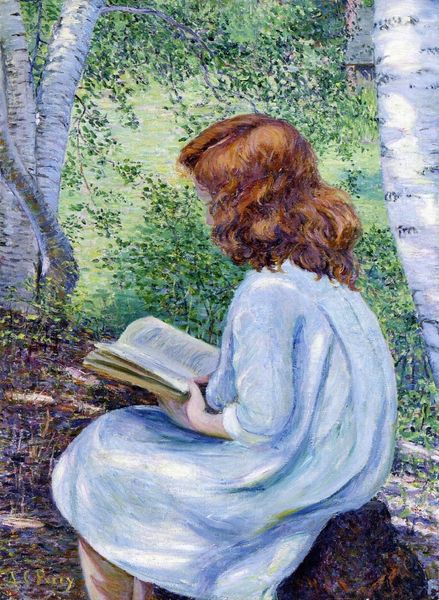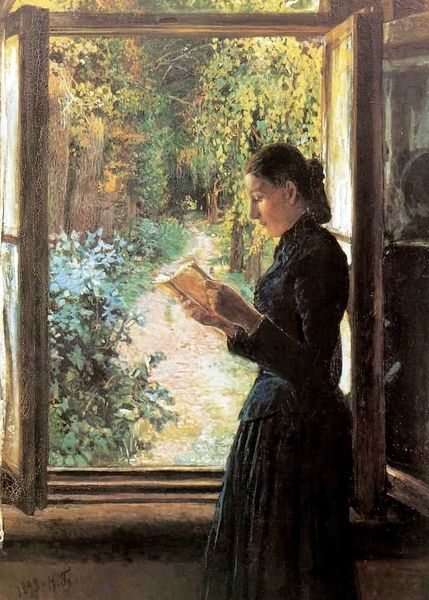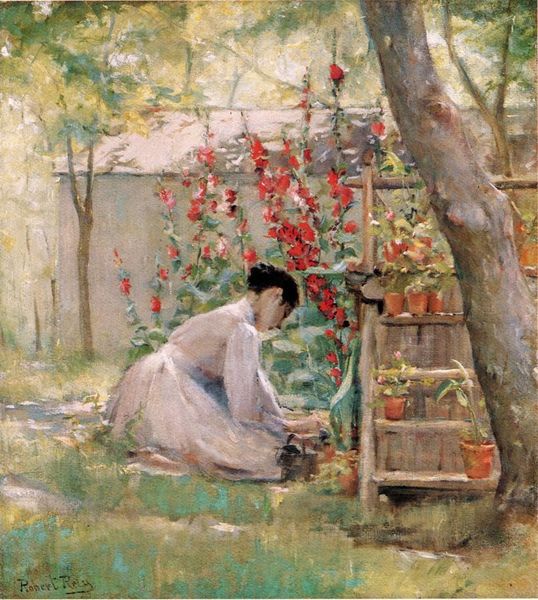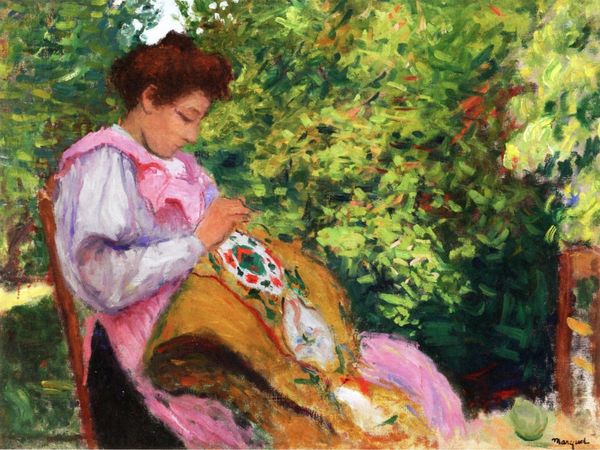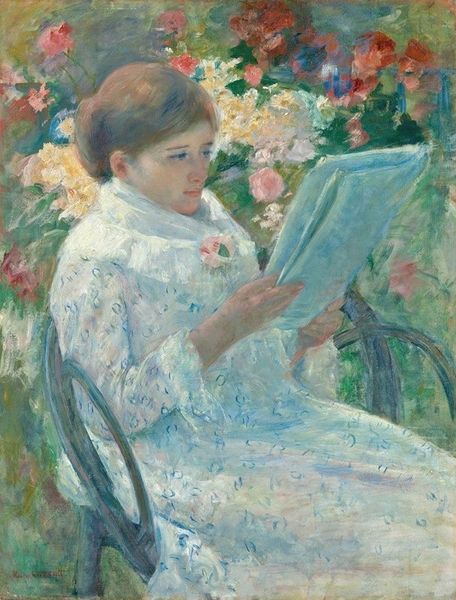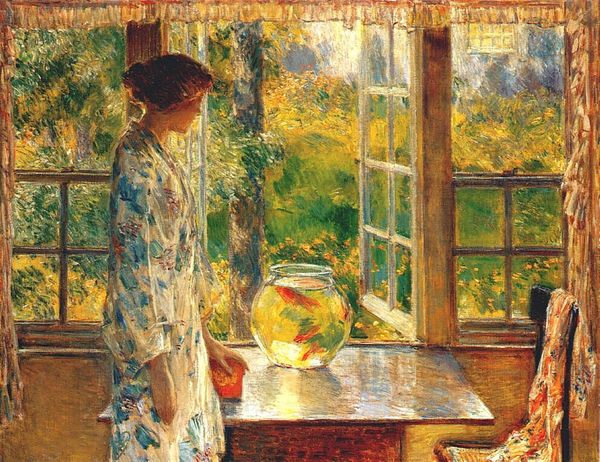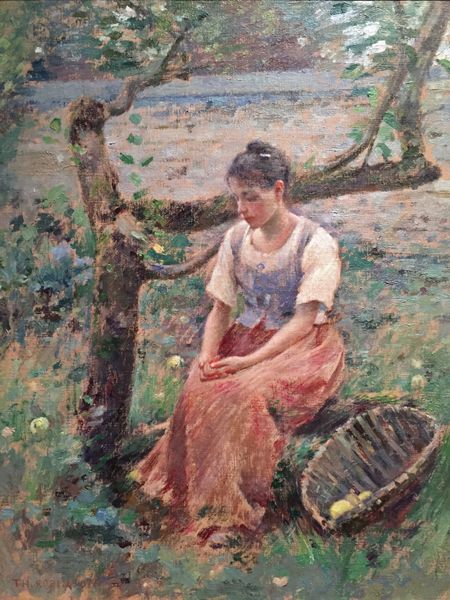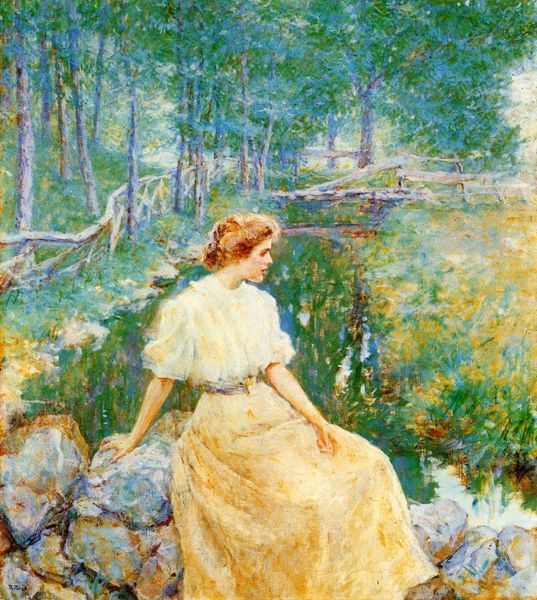
painting, plein-air, oil-paint
#
portrait
#
impressionist
#
painting
#
impressionism
#
plein-air
#
oil-paint
#
landscape
#
impressionist landscape
#
oil painting
#
genre-painting
Copyright: Public domain
Theodore Robinson painted this image of a woman sewing, title The Layette, in the United States sometime in the late nineteenth century. The painting depicts a woman seated outdoors, carefully sewing a baby garment, or layette. The act of sewing was heavily coded in the nineteenth century, representing both domestic tranquility and women’s economic dependence. Robinson was an American artist influenced by French Impressionism, and his work often captured scenes of everyday life. His choice of subject reflects the broader social context of the late 1800s, a period when women's roles were largely confined to the domestic sphere. To fully appreciate Robinson's artwork, archival research into women's labor, social class, and the art market of the time would be beneficial. What can we learn of Robinson's social and political awareness? What was the role of institutions such as art academies in shaping gendered themes? Considering the prevailing cultural norms can open a richer, more nuanced understanding of this seemingly simple scene.
Comments
No comments
Be the first to comment and join the conversation on the ultimate creative platform.

